How to Create ChatGPT-Friendly Content for Your Website (and Why It’s Worth It)
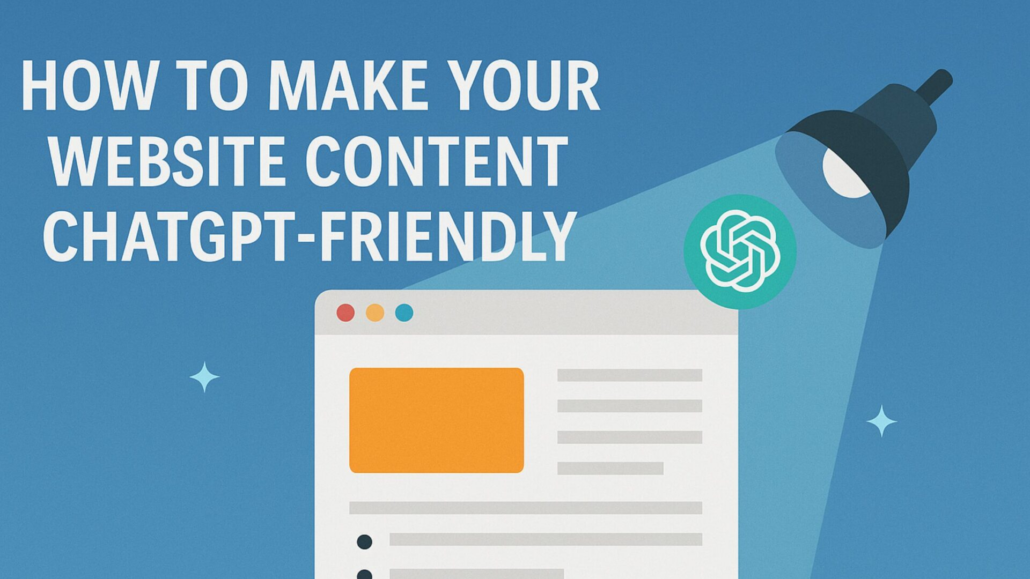
ChatGPT-Friendly Content is the Way of the Future
AI-powered search is no longer a glimpse into the future. It’s already transforming the way users interact with content on the internet. To stay relevant, content creators must now think about making their work ChatGPT-friendly, which means writing and formatting content so it can be easily understood, summarized, and cited by AI tools like ChatGPT and Bing Chat.
These AI-powered tools are revolutionizing how information is surfaced and shared across the web. Unlike traditional search engines that display a list of links, these tools generate direct answers and summaries by pulling information from various sources. They may even cite or link to the content they reference—for example, including a direct link to your blog post as a source beneath an AI-generated answer or quoting a paragraph from your how-to guide in a chatbot response. They highlight relevant content, generate summaries, and attribute ideas to original sources in a conversational format. For content creators, this means there’s a growing opportunity to have your work quoted directly, linked as a source, or summarized in responses generated by AI systems.
What Does It Mean to Be “ChatGPT-Friendly”?
When a user asks ChatGPT a question, the tool doesn’t always rely on its training data. If browsing is enabled, it actively looks for credible, structured, and informative content on the web. It can quote or link back to those pages. Bing Chat and Google’s AI overviews work in a similar way. For your website to be featured in these responses, your content needs to meet three criteria:
- Clear enough that the AI can quickly extract useful information
- Structured enough to help it identify key takeaways and relevant segments
- Credible enough to be trusted and cited as an authority
The potential benefits go beyond novelty. A citation in an AI-generated answer can drive high-quality traffic, build brand authority, and future-proof your content against changing search habits. It’s like becoming part of a new layer of the internet, where AI tools act as gatekeepers to information and frequently reference content that meets their standards. For content creators, this means your articles, reviews, and guides could play a direct role in how people receive answers online. This layer is still evolving, and early adopters who structure and optimize content well may gain a lasting advantage.
Want Your Content to be ChatGPT-Friendly? Write Like a Human, Structure for a Machine
Writing for ChatGPT and its peers isn’t about keyword stuffing or robotic language. It’s about writing for humans. At the same time, you need to make your content easily digestible for AI parsing systems.
Use Descriptive Headings
Structure your content with clear, purposeful H2 and H3 headings. Instead of vague titles like Maintenance Tips, go with something more explicit like How to Clean a Keurig Coffee Maker. This lets AI and users quickly understand the scope of each section.
One Idea per Paragraph
Keep paragraphs short and focused. Each paragraph should tackle one idea or step. This makes it easier for AI to lift a relevant section and present it without distortion.
Use Simple, Direct Language
You don’t need to oversimplify However, do favor clarity over cleverness. Avoid heavy jargon, overly complex sentences, or fluff. AI tools prioritize clarity and brevity when summarizing information.
Frontload Important Info
The most important point should appear first in a paragraph or list. Think of it like writing for impatient readers who quickly scan for the most relevant parts. Large language models behave similarly, scanning and summarizing content rapidly to extract useful insights with minimal context.
Embrace Lists and Tables
Bullet points, numbered steps, and comparison tables are among the easiest formats for AI to parse. If you’re sharing a set of tips, instructions, or comparisons, break them out of paragraphs. Present them in clean, scannable structures.
Add Structured Data That Speaks AI
Even the best-written content can fall short if it’s not labeled in a way machines can understand. That’s where schema markup, or structured data, comes in. It acts as a behind-the-scenes roadmap that tells search engines and AI tools what your content is about.
Product Schema for Reviews
Mark up product reviews with Product and Review schema to highlight names, descriptions, pricing, ratings, and availability. This helps with rich results in search engines. It also makes it easier for AI to identify your page as a trustworthy source for product insights.
HowTo Schema for Tutorials
How-to guides benefit massively from structured markup. Use HowTo schema to define each step in a task, complete with descriptions and images if applicable. Many WordPress users can implement this easily through plugins like Yoast.
Article or NewsArticle Schema
Blog posts and news updates should be marked with either Article or NewsArticle schema. This communicates publish dates, authorship, and headline relevance. It gives both AI and traditional search engines additional confidence in the content’s quality.
FAQ Schema
If your page includes a Q&A or FAQ section, and it should, use FAQPage schema. This is one of the most effective ways to get your exact answers lifted into AI summaries or even featured snippets.
On-Page SEO Still Matters
AI is evolving quickly. Even so, it still relies heavily on search engine indexes to discover and evaluate content. That means traditional SEO practices are just as important when it comes to creating ChatGPT-friendly content. In fact, they may be even more important when it comes to helping your content show up in AI-generated answers.
Title Tags That Get Clicked and Cited
Craft titles that are short, descriptive, and include your main keyword. A well-optimized title helps AI identify the topic at a glance. This increases the likelihood of your page being selected for citation.
Meta Descriptions
Although meta descriptions don’t influence rankings directly, they often appear in SERP snippets. A concise, benefit-driven description can reinforce your page’s relevance. This is especially helpful for AI tools that rely on search summaries to gauge usefulness.
Alt Text for Images
If your page includes visuals, especially product photos or diagrams, be sure to add meaningful alt text. This boosts accessibility. It also helps AI platforms recognize image content and, in some cases, display it.
Internal Linking
Use relevant, keyword-rich anchor text when linking to other posts on your site. This creates a network of related content that boosts topical authority, which refers to your site’s perceived expertise on a specific subject. The more interconnected and relevant content you have on a topic, the more likely AI and search engines are to view your site as a trusted resource. It also helps crawlers understand your site’s structure.
Indexing and Crawling
Don’t accidentally block helpful bots. Make sure OAI-SearchBot, used by ChatGPT, is allowed in your robots.txt file. Submit your sitemap to Bing and Google. Enable IndexNow to notify engines of updates in real time.
E-E-A-T Is Your AI Trust Signal
Experience, Expertise, Authoritativeness, and Trustworthiness, or E-E-A-T, have become central to how Google and AI systems evaluate your content. The more of these you can demonstrate, the better your chances of being chosen as a trusted source.
Highlight Author Experience
Attach bios to your posts. Include details about the author’s background or direct experience with the topic. For product reviews, emphasize hands-on testing. For guides, share personal results.
Link to Credible Sources
Support your statements with citations from respected publications, industry studies, or official documents. AI favors content backed by verifiable data.
Show Off Reviews and Mentions
User testimonials, third-party reviews, and citations from other websites build credibility. If your work is referenced elsewhere, mention it on your site.
Make Your Site Look Legit
A trustworthy site has clear branding, a functional layout, visible contact information, and legal pages like privacy policies. HTTPS is a must. If your site feels shady, AI tools may pass it by.
Format for Skimmability and AI Answers
Most people skim content. AI models behave in a similar way. Structuring your content in bite-sized, logical chunks makes it easier to digest and quote.
TL;DR or Key Takeaways
Include a short summary or bullet list of key insights at the top or end of long articles. This offers an instant answer that AI can grab and display.
Bullet Lists for Tips
Presenting content in bullet points or numbered formats isn’t just user-friendly. It’s AI-friendly. These formats are often lifted verbatim into AI-generated responses.
FAQs at the End
Add an FAQ section that answers specific questions your readers might have. To come up with relevant questions, review what people are searching for using tools like Google Search Console, browse comments and emails from your audience, or check the “People also ask” boxes in search results. This ensures your FAQs reflect real user intent and increase your chances of being cited by AI tools.
Clean HTML
Use semantic HTML tags, such as <h2>, <ul>, and <table>. Avoid placing text inside images or using too many scripts. Clean code improves how easily your site can be crawled and parsed. If you’re unsure about your site’s HTML quality, consider using tools like W3C Validator or browser developer tools to check for errors. Plugins like WP HTML Cleaner or site audit tools in platforms like Ahrefs or SEMrush can also help tidy things up without needing coding knowledge.
How ChatGPT and Bing Choose Sources
Bing Chat and ChatGPT with browsing rely heavily on the Bing search index. That means your content needs to meet a few conditions:
- Be indexed by Bing
- Appear relevant in SERPs
- Be structured clearly with headings and schema
Google’s SGE uses a combination of traditional ranking signals, Knowledge Graph data, and on-page content quality. Structured content that matches intent, is factual, and uses schema markup is more likely to be included in AI overviews.
In summary, good SEO helps you show up. Good structure helps you get quoted.
Real-World Test: What I’m Doing On My Site to Make More ChatGPT-Friendly Content
I’m actively applying these strategies to my own site and closely monitoring the results. Here’s what I’ve implemented so far:
- Added Product schema with full specs and ratings on reviews
- Reformatted tutorials using Yoast’s How-To block
- Wrote summaries at the top of long-form posts
- Added schema-enhanced FAQ sections to many pages
- Cleaned up image alt text sitewide
- Updated robots.txt to allow
OAI-SearchBot - Resubmitted to Bing Webmaster Tools and enabled IndexNow
The early signs are promising. For example, I noticed one of my recent product review pages being cited in a Bing Chat response about budget tech gear. I identified the citation through a spike in referral traffic and confirmed the mention by replicating the search within Bing’s AI chat. While the traffic is modest, it’s highly relevant and signals that the content is being recognized and used by AI tools. I’ve also spotted references to my content in Perplexity.ai queries. These small wins suggest I’m heading in the right direction. I plan to continue testing and adjusting.
Final Thoughts: Build for Humans and Machines
At the end of the day, optimizing for AI is not about tricking the system. It’s about making your content helpful, readable, and trustworthy. The more accessible it is to both humans and machines, the more valuable it becomes.
So yes, structure your content. Use schema. Add summaries, FAQs, and lists. But above all, keep creating useful content for real people. That is what AI is ultimately trying to surface anyway.
Stay adaptable. Stay credible. If you do it right, you might just find your ChatGPT-friendly content being quoted by the next generation of digital assistants.
Go forth, optimize, and get cited! And if you try out these strategies, I’d love to hear how it goes. Share your experiences or results so we can all learn what works best in this evolving AI landscape.





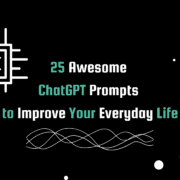
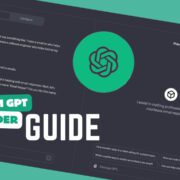
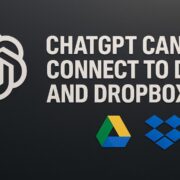
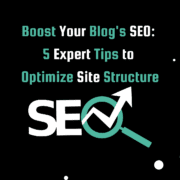


Leave a Reply
Want to join the discussion?Feel free to contribute!